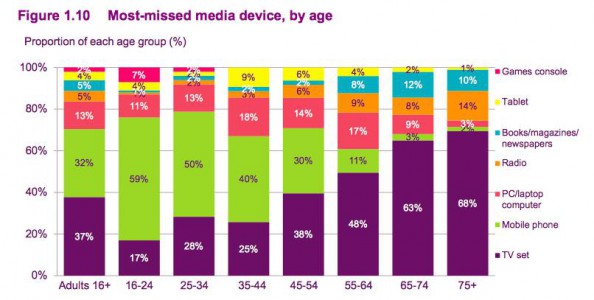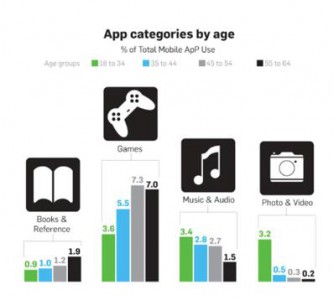It’s no surprise that media device preference differs between generations. However a couple of recent reports have quantified the extent of this difference and some of the results might come as a surprise.
As part of their media literacy research, Ofcom asked a sample of Brits which single media device they would miss the most if it were taken away. As might be expected, grandparents said they couldn’t live without the TV, whereas you’d have to rip the smartphones from millennials’ hands.
What is surprising is the variation: it’s not a straight fight between smartphones and TVs anymore; tablets are particularly popular with the middle-age category, but tweens don’t seem to touch them. This ultimately suggests that the increase and variety of media devices in the home are muddying the waters, making clear cut, linear patterns of media adoption across age groups more likely to become a thing of the past.

Source: Ofcom, 2015.
The growth and the breadth of mobile devices is one large contributor to this muddying. In 2013, 43% of adults said they would miss TV most, compared to just 20% who chose the mobile phone, a difference of 23 percentage points. Two years later in 2015, that difference stands at just 5 percentage points.
Digging into mobile usage a little further, research agency RealityMine have uncovered some more surprising cross-generational trends. Among other results they found that, contrary to what might be expected, when it comes to mobile gamers, one-third are older than 45. Gaming accounts for just 4 percent of millennials’ mobile app usage, while 45- to 54-year-old users spend 8 percent of their time on mobile devices playing games.
Source: RealityMind, 2015.
In conclusion, although age currently remains a differentiator of media usage, the lines are becoming increasingly blurred. Now, the snowballing influx of new tech and savvy consumers mean that people have more devices in their lives and therefore their preferred method of media consumption at any one time is prone to faster change.
This ultimately means that a rich understanding of generational attitudes rather than simple age-bracket generalisation is crucial for devising the optimal media mix.





